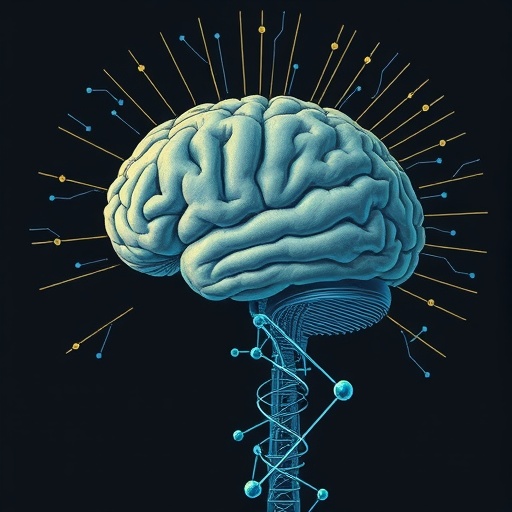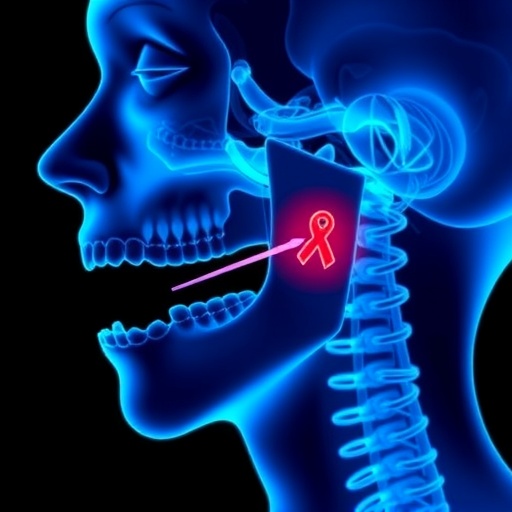In a groundbreaking new study, neuroscientists have delved into the elusive neural mechanics that underpin not only the decisions we make but also the confidence with which we hold these choices. This emerging frontier explores how the brain simultaneously deliberates on potential actions while appraising the certainty of those decisions, a dual process that remains largely enigmatic despite its profound implications for our understanding of cognition, behavior, and even mental health.
Research led by Vivar-Lazo and Fetsch, recently published in Nature Neuroscience (2025), illuminates the concurrent processes that govern choice and confidence judgments within the brain. Their approach harnesses cutting-edge technologies and methodological innovations to dissect how deliberation — the mental weighing of options — is temporally and mechanistically intertwined with the evaluation of confidence. This study not only advances fundamental neuroscience but casts light on mechanisms that could be pivotal for neuropsychiatric disorder treatments and the development of intelligent machines.
At the core of this research is the longstanding question of how the brain orchestrates decision-making. Classically, models of decision-making treat the processes of selecting a course of action and then evaluating how confident the agent is in that decision as consecutive and largely independent. Yet, phenomenological experience and emerging evidence suggest these operations unfold in parallel, with an intricate dynamic interplay. This study ventures to map these concurrent neurocomputational trajectories that govern choice formation and concurrent confidence assessment.
To investigate this, Vivar-Lazo and Fetsch employed a sophisticated neurophysiological recording paradigm in non-human primates engaged in a perceptual decision-making task. Subjects were prompted to choose between options with varying levels of sensory evidence, compelling them not only to make a choice but also to internally evaluate how confident they were about it. This approach provided a nuanced platform to capture how neuronal ensemble activity encodes decision variables corresponding both to choices and confidence judgments over time.
The authors deployed advanced analytic frameworks such as simultaneous neural decoding and temporal dynamics mapping to parse out these concurrent cognitive processes. They found that distinct yet overlapping neural subnetworks within prefrontal and parietal cortices encode information about the evolving evidence toward a decision while simultaneously mirroring confidence accumulation. Importantly, the activity patterns for choice deliberation and confidence estimation do not simply reflect sequential steps but intercalate dynamically, reflecting an interdependent computation in real time.
The significance of this discovery is profound. It suggests that confidence is not a post-decisional byproduct but an integral and concurrent part of decision computation. This insight reshapes canonical models of decision-making by embedding confidence as a co-emergent property, potentially mediated by overlapping neural circuitry. Such insights influence how we conceptualize metacognition — the brain’s capacity to monitor and evaluate its own cognitive operations — which is essential in adaptive behavior and learning.
Moreover, their work sheds light on the temporal dynamics underlying these processes. The neural representation of choice begins to crystallize early during stimulus presentation, while confidence signals ramp up with additional evidence accumulation, reflecting a graded and flexible computation. This intertwined evolution highlights the brain’s remarkable capacity to balance speed, accuracy, and reliability in real-world decisions, where quick responses must often be accompanied by nuanced introspection on certainty.
Translational applications of these findings are far-reaching. Disorders such as obsessive-compulsive disorder, schizophrenia, and anxiety disorders often involve maladaptive confidence judgments or impaired decision-making. Understanding how confidence is neurally computed alongside choice—rather than in isolation—opens avenues for diagnostic markers and targeted interventions that may recalibrate confidence estimation circuits, thereby improving cognitive function and subjective decision quality in affected individuals.
The study also propels artificial intelligence research by suggesting computational motifs that could be leveraged in machine learning and robotics. By embedding confidence-like metrics during decision formation, autonomous systems might achieve more nuanced, human-like adaptability and error monitoring. Such biologically inspired frameworks could revolutionize how AI systems handle uncertainty and improve decision robustness in complex environments.
One particularly intriguing aspect revealed by Vivar-Lazo and Fetsch is the heterogeneity of neural populations involved. Some neurons preferentially encode confidence, others predominantly reflect choice variables, and a subset multiplexes both signals. This cellular and circuit-level specificity emphasizes that confidence is neither a monolithic signal nor a mere epiphenomenon, but a distributed, multi-dimensional neural computation deeply interwoven with deliberative processing.
In terms of methodology, their integrative use of chronometric analysis and population decoding represents a quantum leap in dissecting cognitive processes over time rather than static snapshots. This temporal resolution permits the mapping of decision trajectories and the precise timing of confidence judgments, thus providing a dynamic neural chronicle of the cognitive events unfolding within milliseconds of each other.
Further reinforcing the robustness of their findings, the researchers validated their results across different task conditions and sensory modalities, underscoring the generality of concurrent deliberation and confidence computations. This cross-context consistency hints at a fundamental principle of brain organization, one that orchestrates choice and self-evaluation processes across varying cognitive demands and environmental contingencies.
The implications for educational and training environments are equally compelling. By elucidating how people form confidence alongside decisions, instructional designs can be better tailored to promote metacognitive awareness and improve learning outcomes. Strategies to reinforce appropriate confidence calibration could be developed, mitigating both overconfidence and underconfidence which commonly skew learning efficiency and real-world decision quality.
As Vivar-Lazo and Fetsch’s work continues to ripple through the neuroscience community, it beckons new experimental and theoretical avenues. For instance, future research might explore how neuromodulatory systems influence the balance between choice and confidence signals or investigate how these neural computations evolve with development, aging, or pathological states. Furthermore, integrating this neural framework with psychological theories of confidence could yield a holistic picture bridging mind and brain.
In summary, this landmark study fructifies our grasp on the neural basis of cognition by revealing that the brain concurrently deliberates about choices and the confidence in those choices through intertwined and dynamic neural mechanisms. This paradigm shift enriches our understanding of decision making, impacting fields from clinical neuroscience to artificial intelligence and education. By exposing the neural choreography of choice and certainty, Vivar-Lazo and Fetsch have charted a territory ripe for transformative exploration.
Subject of Research: Neural mechanisms underlying concurrent deliberation of choice and confidence judgment.
Article Title: Neural basis of concurrent deliberation toward a choice and confidence judgment.
Article References:
Vivar-Lazo, M., Fetsch, C.R. Neural basis of concurrent deliberation toward a choice and confidence judgment. Nat Neurosci (2025). https://doi.org/10.1038/s41593-025-02116-9
Image Credits: AI Generated
DOI: https://doi.org/10.1038/s41593-025-02116-9
Tags: advancements in neuroscience researchbrain decision-making processescognitive processes and behaviorconfidence judgment in neuroscienceinnovative methodologies in neuroscienceinterrelation of choice and confidencemental health and decision confidenceNature Neuroscience 2025 findingsneural mechanics of decision-makingneuropsychiatric disorder implicationsstudying brain deliberation and evaluationVivar-Lazo and Fetsch research study





